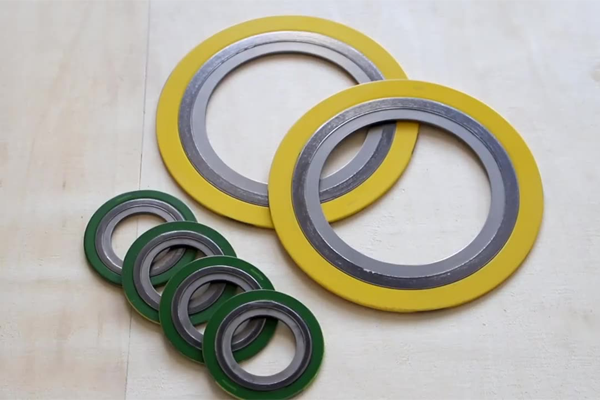In many heavy industries—petrochemical plants, refineries, power generation, heat exchangers, and chemical processing—spiral wound gaskets are preferred sealing solutions when flanges must endure high pressure, temperature fluctuations, and corrosive environments. A spiral wound gasket is made by alternately winding thin metal strips (typically stainless steel, carbon steel, or alloy) and a soft filler material (like graphite, PTFE, or mica) in a spiral arrangement. This layered construction gives the gasket both structural strength (from the metal windings) and sealing flexibility (from the filler). As operating conditions change—thermal cycles, pressure surges, vibration—the gasket “recovers” better, ensuring a tight seal under varying loads. TEADIT+2dobsongasket.com+2 What makes a good spiral wound gasket manufacturer is the ability to control winding tension, select the optimal filler and metal pairing, include guide rings (inner/outer rings), and meet relevant standards (such as ASME B16.20) to guarantee consistency, reliability, and leak-proof sealing.

Dharti Engineering Products can position itself as a reliable spiral wound gasket manufacturer by focusing on custom designs, high-precision winding, and rigorous testing. By offering variants with inner and outer guide rings, specialized filler materials (e.g. graphite, PTFE, mica), customized dimensions, and compatibility with different flange classes, Dharti can serve critical applications where standard gaskets fail. The manufacturer should also ensure that each gasket is tested for compression, sealability, leak resistance, and dimensional conformity, especially for high-pressure or high-temperature services. With this commitment, Dharti’s spiral wound gaskets can support industries running ammonia lines, steam systems, chemical reactors, and hydrocarbon services, providing dependable sealing solutions in the toughest conditions.
FAQs on Spiral Wound Gasket Manufacturing
What standards should a good spiral wound gasket manufacturer follow?
Manufacturers should adhere to standards like ASME B16.20 (metallic gaskets including spiral wound) for dimensions, materials, compressibility, and sealing performance
What are the key processes or controls in manufacturing spiral wound gaskets?
Important steps include precise winding tension control, proper selection and conditioning of filler material, machining of guide rings, dimensional verification, compression and leak testing, and quality control to ensure consistency.
How does a customer choose the right spiral wound gasket from a manufacturer?
They should consider operating temperature, pressure rating, flange type & class, fluid/media compatibility, thermal cycling, and whether inner/outer rings or specialized filler materials are needed. The manufacturer should provide performance data, certificates, and material traceability.
What is a spiral wound gasket and why is it used?
A spiral wound gasket consists of alternating wraps of metal strip and soft filler in a spiral form. It combines the strength of metal with the sealing capability of filler, giving excellent performance under pressure, temperature changes, and flange movement.
What materials are used in the metal and filler components?
Common metal materials include stainless steel (304, 316L), carbon steel, and alloy metals. Filler materials typically include graphite, PTFE, mica, or special composites, depending on chemical compatibility, temperature, and pressure.
Why do spiral wound gaskets often include inner and outer guide rings?
Guide rings help in centering the gasket, prevent buckling of the winding, and act as compression stops. The inner ring protects the sealing element from turbulence and erosion, especially in high-pressure or high-temperature services






